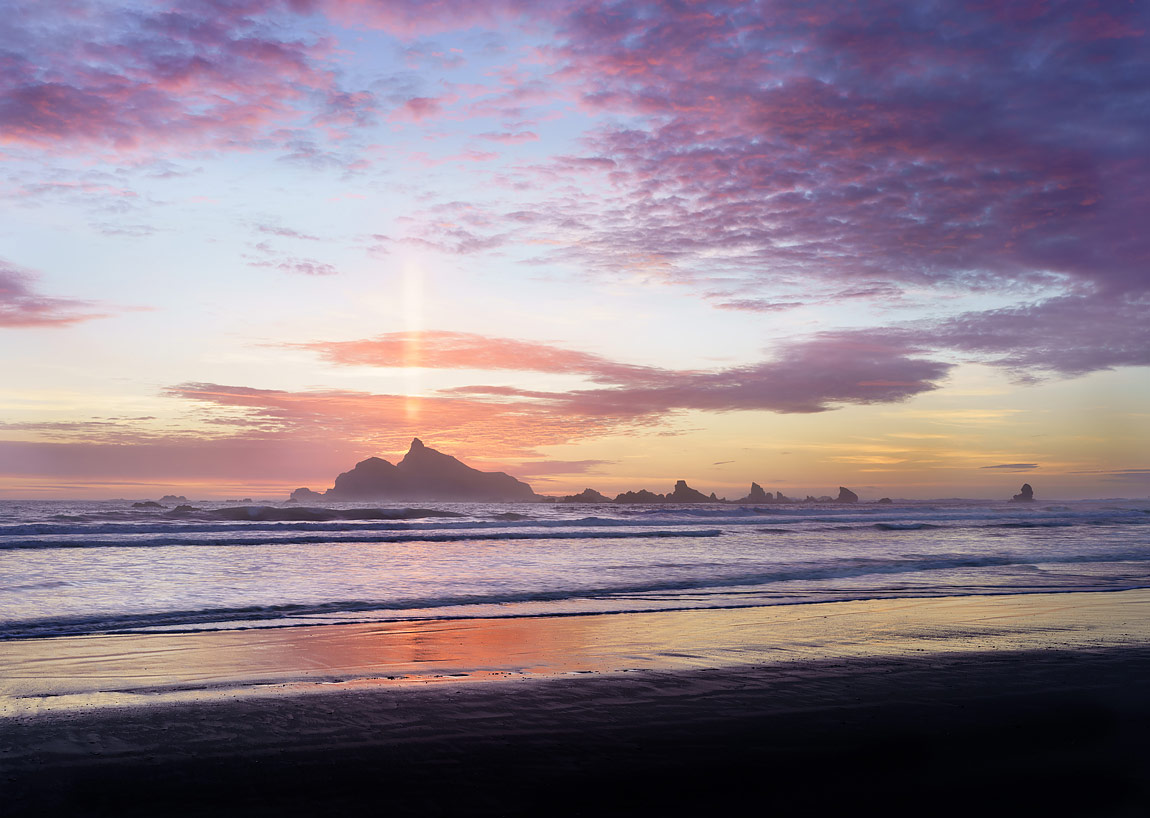Living on California's north coast provides wonderful photography opportunities. Though often rainy and overcast in the winter, it's the time of the year when I find many enjoyable experiences chasing sunsets. This particular evening would be perhaps my most memorable.
As sunset approaches, the depth of the cloud cover along the horizon becomes an important observation to consider. Light generally won't penetrate and brighten up the clouds or produce any color if it's too heavy. So, you should look for a clear horizon or something that appears more like a soft fog bank.
On this particular evening, I could tell there would be an interesting combination of cloud cover and what I refer to as a soft horizon. Another plus was that the ebb tide would result in standing water along the beach, and colorful reflections would appear as the surf receded.
While exploring my subject, the Castle Rock National Wildlife Refuge, and the potential compositional elements I wanted to include, I settled on my camera position and began capturing images. I had no idea I would soon experience something I'd never seen before. Then, just after sunset, a solo beam of light appeared, seemingly emanating from the apex of Castle Rock. It was a truly magical moment that I'll likely never forget.
I would later learn this is a Sun pillar or light pillar, formed when sunlight (or another bright light source) reflects off the surfaces of millions of falling ice crystals associated with thin, high-level clouds. I've made hundreds of captures of the Rock, but none are quite this unique.


